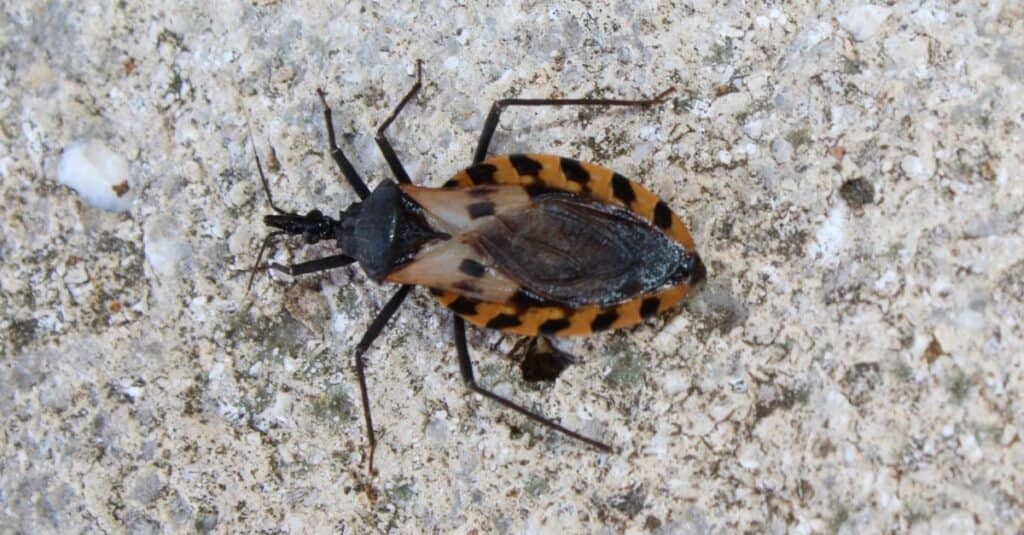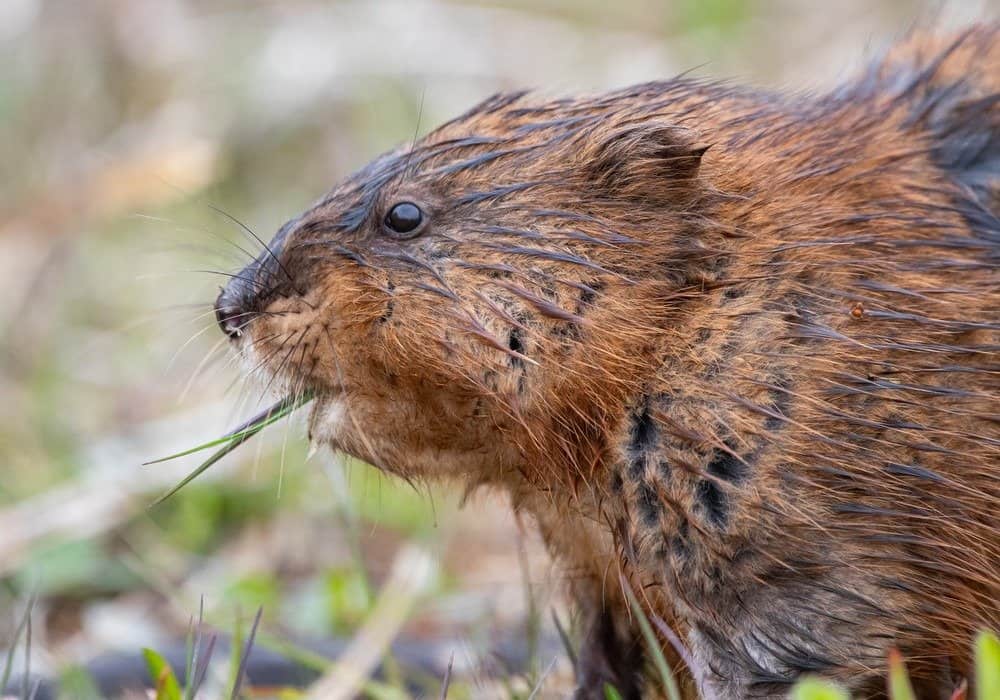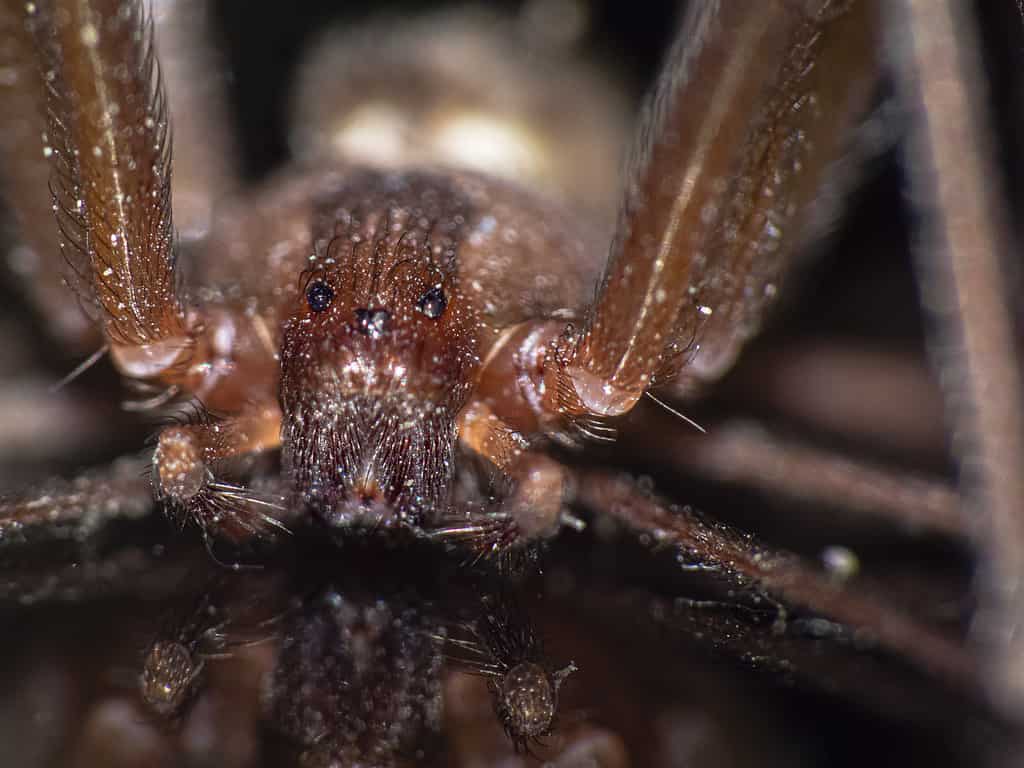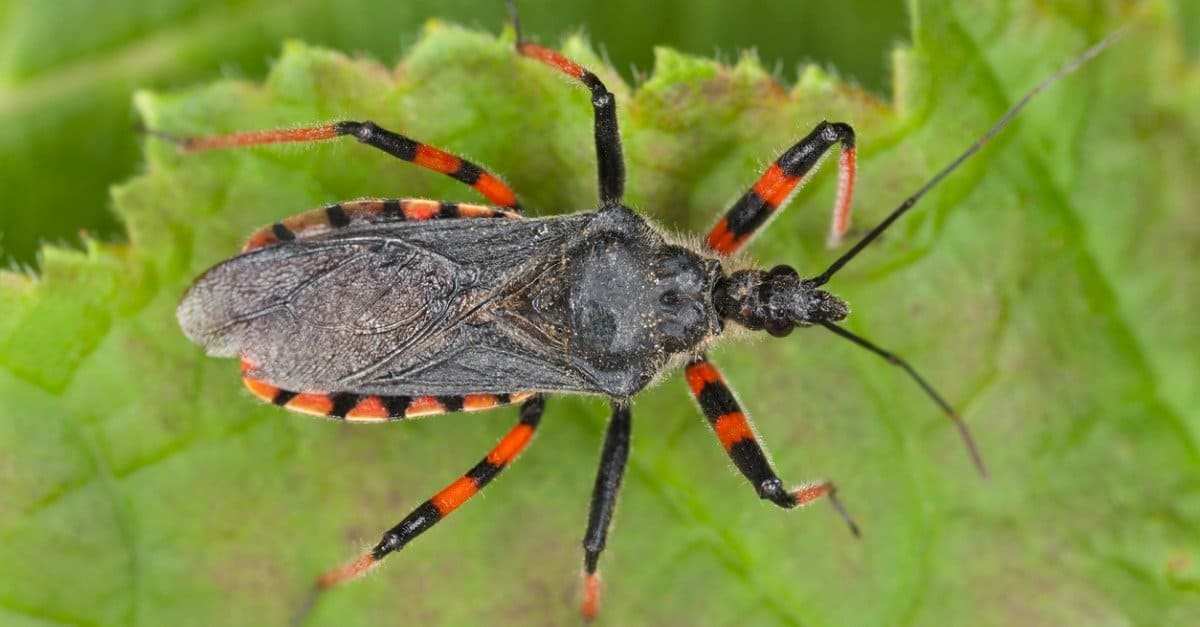When you think of Indiana, you might not think of extremely dangerous animals. However, there are a few animals that live in or near lakes and rivers in the Hoosier State. And many of these animals can be considered quite dangerous.
Before traveling to Indiana, it’s a good idea to find out whether there are any venomous or dangerous animals there. When you see a snake or spider that you have never seen before, you won’t be as alarmed as a result of your research. This is especially the case if you’re going to be staying near lakes or rivers in Indiana.
Luckily, animals that can genuinely kill you are few and far between in this region. Some of the animals in this area may appear exceedingly dangerous and frightening at first glance. However, the statistics show that they may not have killed anyone in years or even ever.
In this guide, we’ll take a look at some of the most dangerous animals one can find near lakes and rivers in Indiana.

Are Indiana’s Lakes and Rivers Dangerous?
The state of Indiana is home to a wide variety of aquatic creatures. Many of them may be deadly to people. These creatures may be fish, reptiles, or even mammals. When swimming, boating, or taking part in other activities in or close to Indiana’s lakes and rivers, it is crucial to be aware of the possible risks posed by these creatures.
Types of Dangerous Indiana Aquatic Creatures
The alligator is among the most hazardous water creatures in Indiana. Alligators have been spotted in Indiana’s rivers, despite the fact that they are not native there. These large reptiles can be very dangerous to people, particularly if they feel threatened or agitated. Alligator sightings in Indiana are uncommon. However, it’s still crucial to be aware of them and take the necessary safety measures if you do.
Snapping turtles are another deadly species that may be found in Indiana’s waters. These turtles are world-renowned for their strong jaws and pointed claws. They can cause severe wounds if they sense a threat. Snapping turtles should not be approached too closely, and you should refrain from startling them in any manner.
The lakes and rivers of Indiana are also home to a number of venomous snake species. Some of these include copperheads and cottonmouths (a.k.a. water moccasins). If attacked, these snakes may become highly aggressive, and their bites can have major negative health effects. It is crucial to be conscious of their existence and take the proper safety measures, such as donning protective clothing and footwear.
There are a few types of fish in Indiana’s rivers that can be dangerous to humans even though fish are generally not thought to be harmful to people. In Indiana lakes and rivers, muskellunge are huge predatory fish that have been known to attack people when provoked or feeling threatened. Although uncommon, freshwater stingrays have been spotted in various lakes and rivers in Indiana. These rays have a venomous barb on their tail that, if walked on or unintentionally touched, may inflict excruciating agony and harm.
The Dangers Are Minimal, So Don’t Worry!
The great majority of aquatic species found in Indiana’s lakes and rivers are not thought to be hazardous to people, making the likelihood of coming across one in these surroundings extremely minimal. However, when indulging in water-related activities in Indiana, it is still crucial to use caution and pay attention to your surroundings.
In the event that you do come across a hazardous animal in one of Indiana’s lakes or rivers, it’s crucial to keep your cool and refrain from irritating it. Get medical help right away if an animal bites you or injures you.
Overall, the likelihood of running across a harmful animal is modest, despite the fact that some of them reside in or close to Indiana’s lakes and rivers. When engaging in water-related activities in Indiana, it is crucial to be aware of the possible risks posed by these creatures and to take the necessary safety measures. You may take advantage of everything that Indiana’s lakes and rivers have to offer while reducing the likelihood of coming across a harmful animal by practicing care and being aware of your surroundings.
A List of the Most Dangerous Animals Swimming in Indiana’s Lakes and Rivers
Kissing Bug
Classification: Triatominae subfamily
The kissing bug is an insect that feeds on blood. It is also called the triatomine bug. This potentially deadly insect is present in some areas of Indiana near lakes and rivers. This insect poses a risk because of the possibility that it harbors the parasite that causes Chagas disease, a potentially fatal condition that can harm the heart and digestive system. The kissing bug gets its name because it frequently bites people when they are asleep near their mouths or eyes. It is crucial to be aware of the kissing bug and take precautions to avoid exposure, including applying insect repellent and caulking crevices and gaps in dwellings near waterways. You should get medical help right away if you think you might have been bitten by a kissing bug.

The kissing bug (pictured) is dangerous because it can cause Chagas disease.
©Vanessa Becker-Miller/Shutterstock.com
Water Mocassin (a.k.a. Cottonmouth)
Classification: Agkistrodon piscivorus
The water moccasin, sometimes referred to as the cottonmouth, is a very venomous snake located in or close to lakes and rivers in Indiana. This snake is deadly because its venom is very strong and can occasionally result in severe discomfort, tissue damage, and even death. Given their aggressive nature and propensity to protect themselves when confronted, water moccasins may bite more frequently than other snakes. It’s crucial to be aware of the water moccasins’ territories and to maintain a safe distance if you come across one. Go to the hospital right away if a water moccasin bites you!

The water mocassin (pictured) is one of the most deadly snakes in Indiana.
©Paul S. Wolf/Shutterstock.com
Snapping Turtle
Classification: Chelydra serpentina
The muscular and enormous snapping turtle can be found in lakes and rivers all around Indiana. These turtles are deadly due to their strong jaws, which can result in serious wounds if they feel threatened or provoked. Their razor-sharp claws may also pierce and lacerate skin. Snapping turtles are potentially dangerous to anyone who could unintentionally irritate them because they are known to be territorial and will defend themselves if they feel threatened. These turtles should not be approached too closely, and you should refrain from approaching them in any manner.

Snapping turtles (pictured) have a sharp, dangerous bite.
©Sista Vongjintanaruks/Shutterstock.com
Northern Copperhead
Classification: Agkistrodon contortrix mokasen
A venomous snake called the northern copperhead may be found in Indiana’s untamed areas, especially close to lakes and rivers. The snake’s venom is strong, and a bite can result in excruciating agony, edema, and tissue damage. The venom occasionally causes potentially fatal side effects including cardiac arrest or breathing collapse. The possibility of being bitten increases since northern copperheads are known to be aggressive and will defend themselves if they feel threatened. Care must be taken to prevent interactions, such as wearing protective gear and footwear while hiking or camping in Indiana’s wilderness. To get the right care if you are bitten by a northern copperhead, go to the hospital right away.

The northern copperhead (pictured) can blend in easily with its surroundings.
©iStock.com/David Kenny
Muskrat
Classification: Ondatra zibethicus
This entry on our list of dangerous animals in Indiana might be surprising. Although they can be aggressive, muskrats located in Indiana’s lakes and rivers typically do not pose a serious threat to people. Although they may defend themselves if they feel attacked, most of the time, their bites are not harmful to people. However, their true danger comes from the diseases they carry. Leptospirosis and tularemia, for example, are illnesses that people can get from muskrats.
Muskrats also cause damage to the natural areas where they live in Indiana. Muskrat tunnels and burrows can erode riverbanks and make them unstable, which puts infrastructure and property in danger. It’s crucial to be aware of muskrats’ existence, stay away from them, and take precautions to protect the riverbanks and other places where they could burrow if you live on property near rivers.

Muskrats (pictured) are only dangerous due to the diseases they carry.
©Scott Canning/Shutterstock.com
Alligators
Classification: Alligator genus
This entry might sound crazy! However, while alligators are not native to Indiana, they have actually been found around the state’s many waterways. Alligators are huge, muscular predators with sharp teeth and powerful jaws that have the potential to kill or seriously injure prey. Just as well, they have a reputation for being hostile and territorial, particularly while mating or defending their young.
Human alligator assaults are uncommon, although they can happen if the reptile feels threatened or if people get too close to its environment. Alligators may be present in Indiana’s lakes and rivers, therefore it’s vital to be aware of this possibility and take care to keep away from potential interactions. One can do this by recognizing alligator habitats and not feeding them.

Alligators (pictured) are rare in Indiana, but not completely absent.
©Sorbis/Shutterstock.com
Brown Recluse Spider
Classification: Loxosceles reclusa
While this venomous spider is not typically found very close to or in water, it is almost always found in wooded areas of Indiana that are near waterways. The brown recluse spider is a venomous spider that may be deadly to humans. A toxin found in the venom of the brown recluse spider has the potential to harm tissue and trigger secondary illnesses if left untreated. The bite may initially be harmless but may soon transform into a painful, swollen, red, and painful lesion that may result in extreme discomfort, fever, and chills. In extreme circumstances, the venom may result in systemic problems including renal failure, convulsions, and even death.
It is crucial to take care to keep away from brown recluse spiders and to get medical help right away if you even suspect that you have been bitten. Indiana residents who live close to lakes and rivers must take precautions to keep spiders out of their homes, including caulking cracks and openings and keeping one’s house tidy and clear of debris.

The brown recluse spider (pictured) is one of the most dangerous spiders in America.
©iStock.com/Wirestock
Bull Shark
Classification: Carcharhinus leucas
You might be thinking, “A shark? But sharks come from the ocean!” And you would be correct. However, there have been some rare instances of bull sharks entering freshwater rivers and lakes in Indiana. So, they have a spot on our list of dangerous animals in Indiana.
Bull sharks are regarded as one of the most deadly shark species in the world, and their presence in Indiana’s freshwater rivers and lakes is worrying. Bull sharks, unlike the majority of sharks, can live in both freshwater and saltwater habitats. They have been observed swimming hundreds of miles upriver in search of food.
Bull sharks are ferocious predators that are known to strike humans without provocation, and they are to blame for many injuries and fatalities that have occurred all around the world. They are known to be aggressive and readily provoked, and their strong jaws and pointed teeth make it easy for them to bite through flesh and bone.
Bull shark sightings in Indiana have been reported in the Ohio River, which borders the southern part of the state. Although human attacks are uncommon, it is crucial for individuals to be aware of the risks and take safety measures when swimming or boating in these areas.

The bull shark (pictured) is rare in Indiana, but is still the deadliest animal you can encounter in the state’s waterways.
©Stefan Pircher/Shutterstock.com
River Lamprey
Classification: Agnatha class
In lakes and rivers throughout Indiana, lampreys are regarded as a pest species. These parasitic jawless fish adhere to other fish and feed on their blood and bodily fluids. Lampreys are a recognized hazard to a number of fish species in Indiana, including lake trout and whitefish.
Lampreys are generally not harmful to people, but their presence in lakes and rivers can harm the ecology. They can seriously harm fish populations, which may have an impact on the entire food chain. Lampreys may also be dangerous for boaters and fishermen. This is because they are drawn to motion and may unintentionally attach themselves to people or tools.

River lampreys (pictured) can cause harm to Indiana’s aquatic ecology.
©Andrei Nekrassov/Shutterstock.com
Muskellunge
Classification: Esox masquinongy
In Indiana, lakes and rivers are home to the popular game fish known as the Muskellunge. Even though they are not often harmful to people, muskies are strong, huge predators that, if not handled carefully, may be deadly to swimmers and anglers. They are renowned for having powerful jaws and keen teeth that make it easy for them to capture and consume their prey.
Muskies have a tendency to become hostile when they feel threatened or when defending their territory. There have been sporadic reports of muskie assaults on people, as well as attacks on fishing lures and boats. Despite the rarity of these occurrences, it is crucial that people use caution when swimming or fishing in areas where muskies are known to be prevalent. Swimmers should avoid places where muskies are known to congregate, and anglers should use heavy-duty equipment and exercise caution while handling these enormous fish.

The Muskellunge (pictured) is a very aggressive freshwater fish.
©Engbretson, Eric / U.S. Fish and Wildlife Service, Public domain, via Wikimedia Commons – Original / License
Summary of the Most Dangerous Animals in Indiana’s Lakes and Rivers
| Rank | Dangerous Animal |
|---|---|
| 1 | Bull Shark |
| 2 | Water Moccasin |
| 3 | Northern Copperhead |
| 4 | Brown Recluse Spider |
| 5 | Kissing Bug |
| 6 | Alligator |
| 7 | Snapping Turtle |
| 8 | Muskellunge |
| 9 | River Lamprey |
| 10 | Muskrat |
Thank you for reading! Have some feedback for us? Contact the AZ Animals editorial team.








